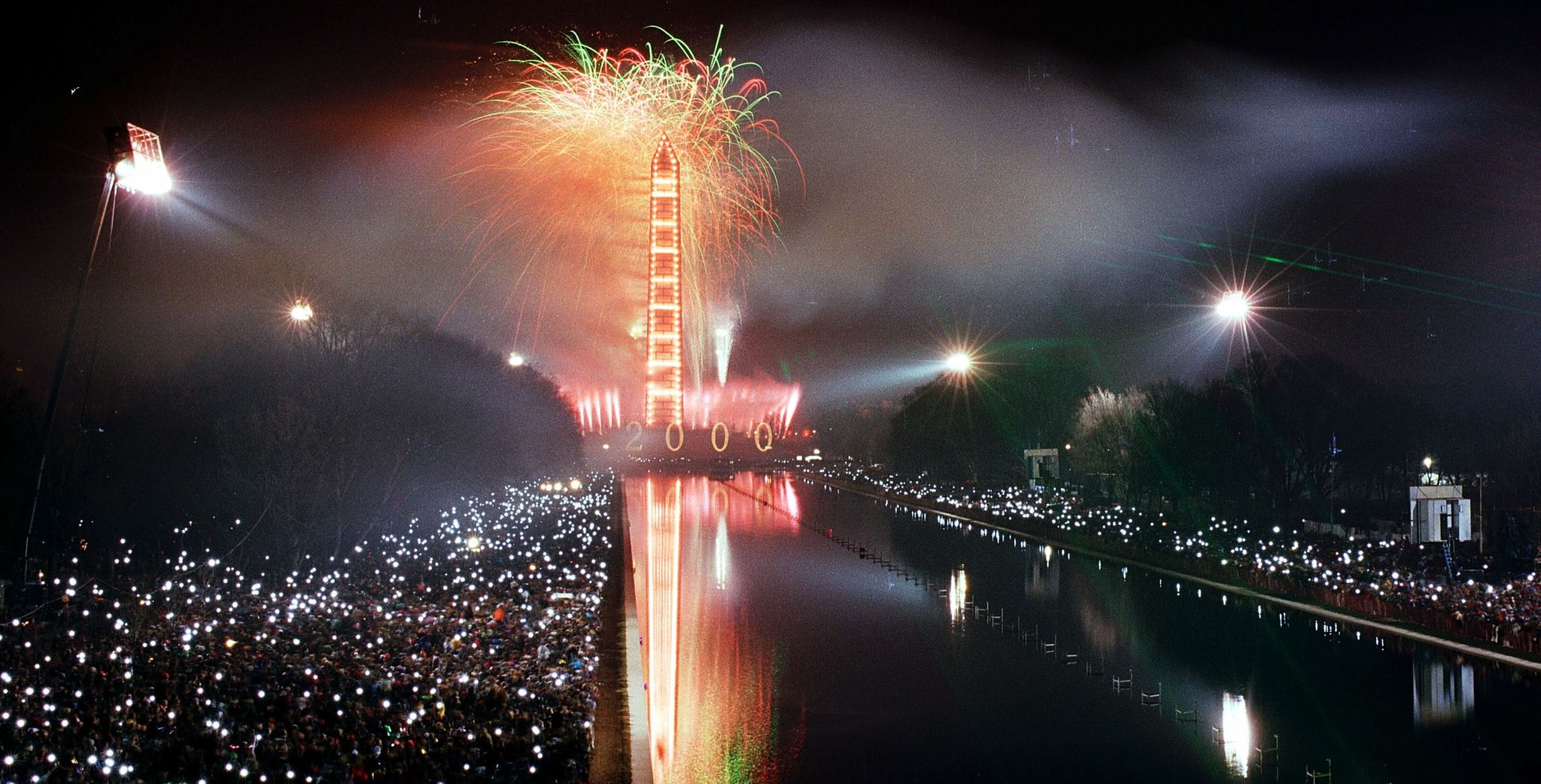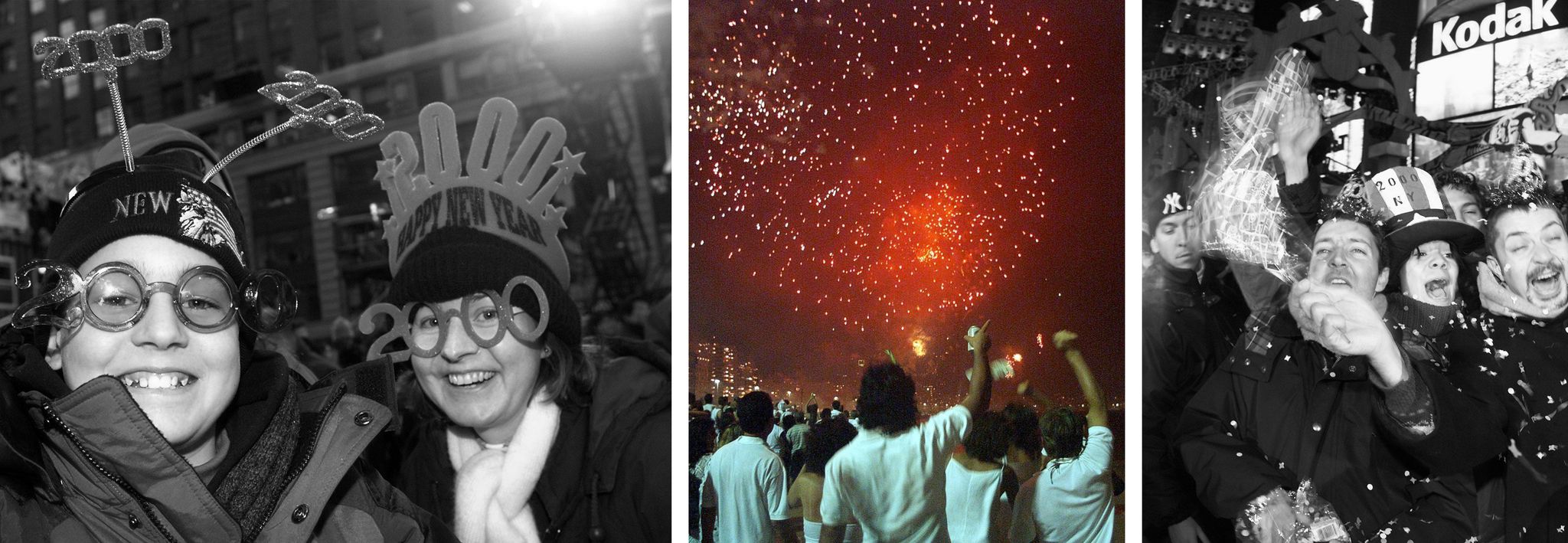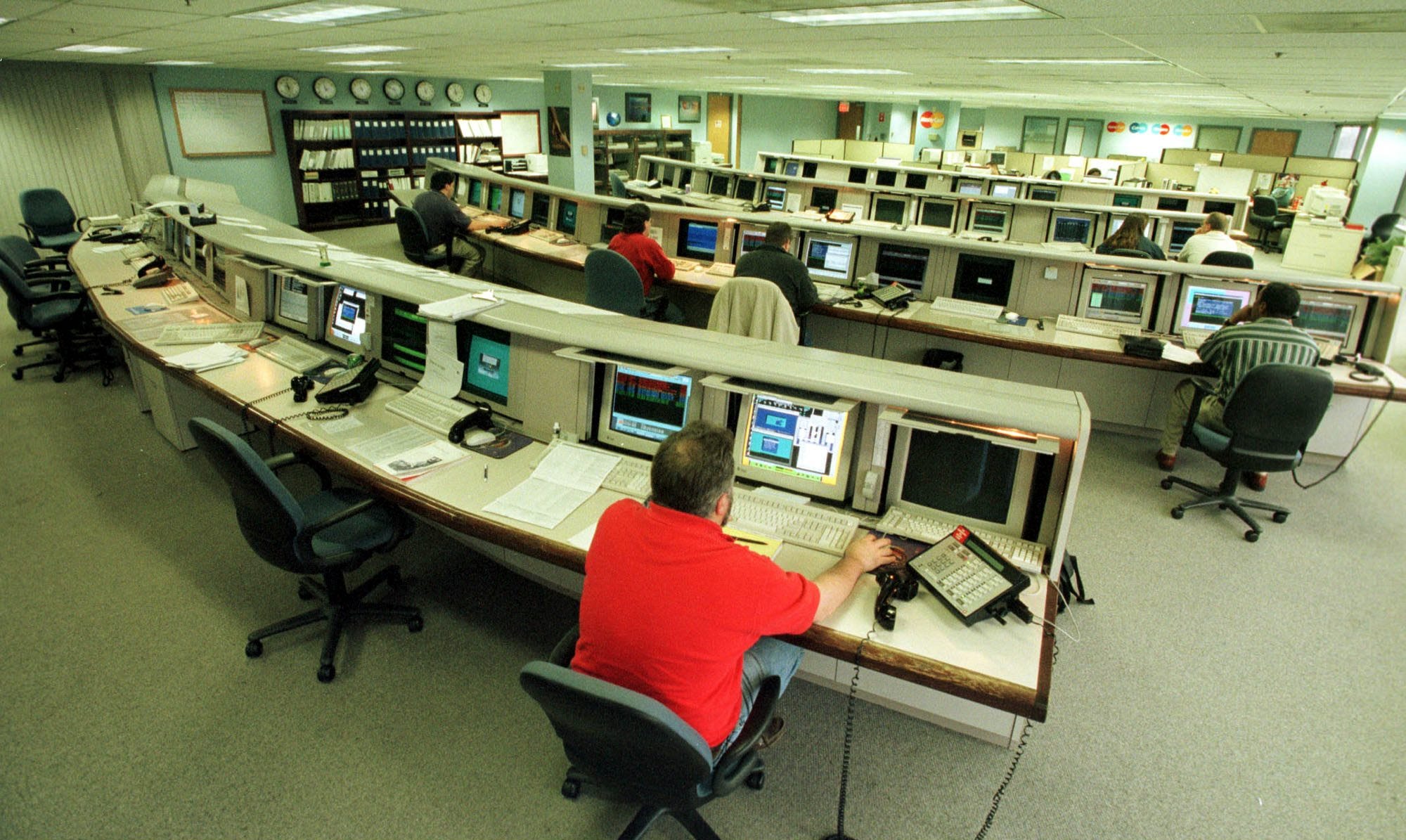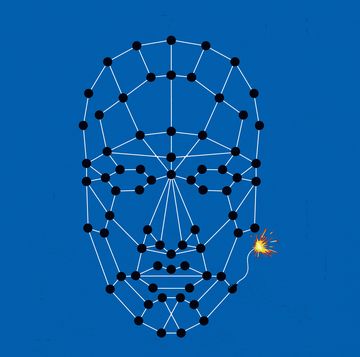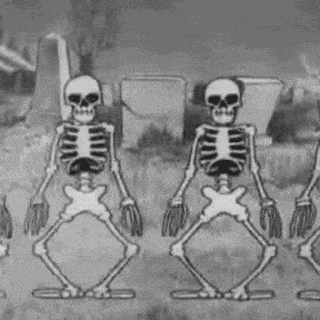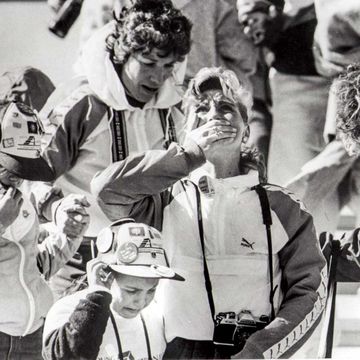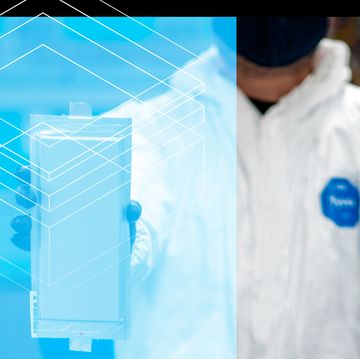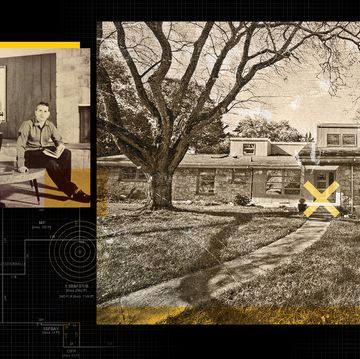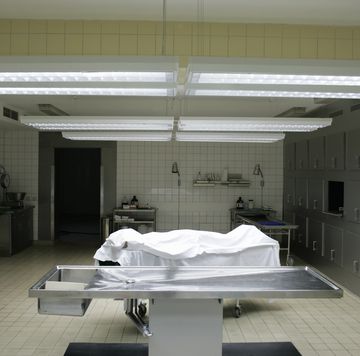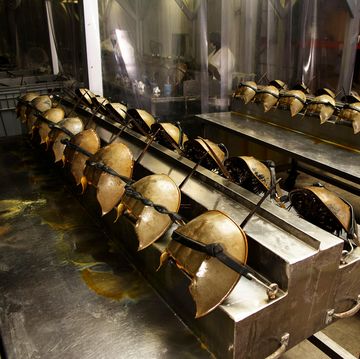Twenty years ago, we were all pretty sure the world was going to end on January 1, 2000—or, if not the world, then at least civilization.
It had something to do with how most computer programs used the last two digits to represent a four-digit year, and when the clock rolled over at the end of 1999, every computer would think it was 1900. When that happened, ATMs would stop working, the electrical grid would shut down, planes would fall out of the skies, and newborn babies would get hundred-year-old birth certificates.
We were legitimately freaked out. And why wouldn’t we be? TIME published an ominous cover story with extra exclamation points. President Bill Clinton said not-at-all-reassuring things about Y2K like, “This is not one of the summer movies where you can close your eyes during the scary parts.” CNN suggested that readers prepare for Y2K by stockpiling powdered milk, canned juices, and “comfort food.” (Note: Tech Armageddon is easier to take with carbs.) Apple produced this TV commercial, which still makes us want to hide under the bed:
But then New Year’s came and went. We all woke up with electricity. ATMs didn’t refuse to dispense cash. Planes remained in the air. The great catastrophic threat of our time turned out to be a colossal dud.
So what really happened with Y2K? Was humanity ever actually in danger? Was this tech’s Cuban Missile Crisis, or Mayan Doomsday Calendar? To find out the truth, we spoke to the people who witnessed it firsthand: those brave souls who toiled in the IT trenches, surrounded by other underslept programmers, probably while crouched nervously behind a ThinkPad 701 or Bondi Blue iMac.
This is their story.
Part I. The Early Warnings
STEVEN M. BELLOVIN (Professor in the Computer Science department at Columbia University): I casually realized that there might be a problem in the late 1960s, but thought nothing of it. I was learning and using [the computer programming language] PL/I around then, and noted the lack of digits for the century. There were similar problems with [the operating system] OS/360. All that said, the fact that I casually noticed two-digit years does not mean that I foresaw the problem—I absolutely did not.
PETER DE JAGER (Canadian computer programmer): I realized what would happen in 1978. I was a computer operator for IBM. We managed a system called COLT, which stood for Canadian Online Tellers. One day I noticed that we were typing in just two digits for the year. When we got to 2000, what numbers would I be typing in? Double zeros? And then wouldn’t the computer think it was 1900? It meant that any calculation based upon time, which is all financial calculations, would be incorrect. So I went to my boss and said, “We have a problem. The computers out there aren’t going to work properly when we hit the year 2000.” He looked at me and said, “You’re worried about a problem that isn’t going to happen for 22 years? Relax, somebody will fix it by then.” So I got up and left his office.
BELLOVIN: The problem dates back to the pre-computer punch card days. Punch cards for information storage and processing go back to the 1880s. Although there were many different varieties of punch cards from different vendors, the IBM one was the most popular. It had 80 columns; each of which could hold approximately one character. This meant that space was at a premium. You couldn’t do smart calculations to save space because, in those days, you had no computers. Folks used all sorts of tricks to save space.
But that all made it a very natural decision to omit the century—no one was thinking far enough ahead. The early computers replicated this record format. Things weren’t as constrained, and while storage was still expensive, going from, say, an 80-byte record to 82 bytes was certainly doable. But remember that people still weren’t planning ahead, and many of the early databases were simply copies of the card images.
CAPERS JONES (former manager and software researcher at IBM): I worked in the IT business since the early ‘70s. We knew about the Y2K problem at IBM pretty early, but I didn’t pay that much attention to it until the ‘90s. Because it wasn’t unique. They were other date-related issues in software.
MARTYN THOMAS (Professor of IT, Gresham College, London; led the Y2K teams for Deloitte Consulting internationally in the 1990s): A British grocery store, I think it was Marks & Spencer, received a delivery of tinned meat in the late 1980s that had a use-by date of 01/00. The goods inward software checked that it was in date, recognized 01/00 as January 1900 and rejected it as already over 80 years old. They reordered, but the replacement had the same problem.
DE JAGER: We get to 1989, and still nobody is working on this problem. I’m at a company that uses an IBM product called PROSS—Professional Office Systems. On January 1, 1990, the system goes haywire. Why? They’re using a one-digit year in their system, so when it went from 89 to 90, it went back to zero again and messed everything up. Out of curiosity, I went to my personal computer and set the date to December 31, 1999, just a few minutes before midnight. I powered off the computer and waited 10 minutes. Then I fired up the computer and looked at the time. It said the date was 1984. That’s when I began to get nervous.
Part II. Something Wicked This Way Comes
DE JAGER: In 1993, I wrote an article about the Y2K problem for Computerworld magazine, which was the largest IT magazine in the world. They gave it the title “Doomsday 2000” and it was the article that got everyone’s attention. [Excerpt: “Our information systems are based on a faulty standard that will cost the worldwide computer community billions of dollars. We and our computers were supposed to make life easier. What we have delivered is a catastrophe.”] From that point until 2000, Y2K was the only thing I did. It became my full-time job.
CLIFFORD STOLL (Berkeley astronomer, author, and vocal Y2K critic): Y2K? Oh my, I haven't thought about that debacle in years. So much ado about nothing. Don’t get me started.
DE JAGER: In the beginning, I was laughed at. I was called a farce and a jokester. But when they realized I was right, that the danger was real, I became the fear monger.
STOLL: Y2K was easily described, easily understood, and easily blown out of proportion. I meet people at the grocery store—well, the Berkeley Bowl—who hoped that all computers would melt down, and we would somehow be transported back to a wonderland of pre-technology.
WILLIAM PINSON (former employer of a hardware provider for the oil & gas industry, which he declines to name): My division handled instrumentation and controls for the drilling process, as well as industrial products for the shipping industry and the U.S. Navy. I was tasked to lead the Y2K software and firmware upgrade kit effort for the company. I don’t recall when or how I first learned about Y2K, but it was probably the same as everybody else. The hype in the media, both mainstream and otherwise, and an array of “gloom and doom” advertisements by companies trying to cash in on the hysteria.
DAVID JEFFRIES (VP of Development at IBM): Y2K kind of cropped up in ‘95. We started noticing the growth of a separate group that started showing up at meetings. They were like, “We’re the Y2K engineers” or “We’re the Y2K project program analysts.” The rest of us would look around at each other and go, “Y2K? What’s that?”
TOM ATLEE (co-founder and research director of the Co-Intelligence Institute, and co-editor of Awakening: The Upside of Y2K): In March of 1998, a Silicon Valley tech manager who was on the board of my small nonprofit asked me, “Tom, what do you know about the systemic effects of Y2K?” I responded, “I don’t have to worry. I have a Mac.”
DE JAGER: Most people did not seem to understand the depth of the programming we depend on. It’s not unusual for a bank to have in excess of 50,000 programs. So when you say, “We have a two-digit problem, why don’t you just expand it to four digits?” Okay, fine. Go ahead. Where are they? Where are the dates? In which databases? And by the way, which ones are you going to fix first? If you change a program to use four-digit years, that means you have to change all the inputs to four-digit years. Now the inputs to one program are the outputs to another program. To fix this one, you have to fix that one, and to fix that one, you have to fix the other one, and to fix the other one, you have to fix the vendor.
ATLEE: She said, “I’m not talking about your computer. I’m talking about what will happen in all the interconnected economic, infrastructural, and managerial systems if the Y2K bug goes through some of its suspected breakdowns.” I did some research and what I found suggested to me that disruptions—caused either by the bug itself or by mass expectation of disruptions—were highly likely. Within a couple of weeks, I’d set up a website about using Y2K for personal and social transformation, as well as a clearinghouse and mailing list for Y2K news and information.
PINSON: The good thing is, the Y2K fix was relatively simple. But the bad thing is, it was hardware related, likely requiring new circuit boards.
JEFFRIES: This wasn’t a hardware thing, necessarily. It was primarily an application scenario.
PINSON: It wasn’t just a problem in software or firmware, but with a thing called a “real time clock” that every computer has. It’s an integrated circuit chip backed up by a little lithium battery. Prior to the late ‘90s, RTCs always counted the dates in a two digit code. To handle a three- or four-digit date required a new RTC. So even if the software was corrected to handle three- or four-digit dates, it wouldn’t be a complete fix without a new RTC chip.
JEFFRIES: But the problem was, if we did find something, could we change it? Did we know how to change the application? Did we even still have the source code? Did we have the engineer who wrote it?
DE JAGER: People saw me as the guy trying to fix the Y2K issue. I didn’t fix the code. I didn’t fix a single line of code. Not one. My self-assigned job was to get people to think, ‘I wonder if that jerk is right.’ All I wanted you to do was go out and test your system. By all means, if you find out that I’m full of it, come back and write an article. Rip me to shreds.
Part III. The End Is Nigh?
LISA VOX (historian and author of Existential Threats: American Apocalyptic Beliefs in the Technological Era): American culture was already primed for an apocalyptic panic. Though the nuclear threat receded in the ‘90s, apocalypticism still pervaded American culture through the militia movement, dispensational premillennialism, and the tragedies surrounding the millennial religious groups of Heaven’s Gate and the Branch Davidians.
BELLOVIN: President Clinton put together an emergency response task force. I was invited to visit DC to discuss the safety of internet communications over the critical roll-over period—and there was a risk. Some computer security folks had gotten hold of the source code to one of the first “distributed denial of service” (DDoS) attack programs. DDoS attacks take sites offline by flooding them with traffic. Some of the comments in the code indicated that the group behind it was planning a DDoS attack for 11:59pm on 12/31—what could we do?
I outlined several ways in which the task force could “hide” from the attackers and keep functioning. But I also noted that there were some attacks that couldn’t be dodged that way. In other words, we could have been in a situation where there were serious problems and someone would have to decide to risk panic by turning off a major information source. I turned to the general and said, “I’m glad you’ll be the one making that call and not me.”
BOB STILGER (co-founder and Executive Director of Northwest Regional Facilitators): I was talking about this in ‘96 or ‘97 with Robert Theobald, a British socio-economist and very close colleague of mine. We were discussing the whole question of how to prepare for Y2K not primarily as a technology issue, which a lot of people were paying attention to, but also looking at the resiliency of our communities. People at a neighborhood level needed to get reconnected with each other and make plans for what they were going to do if Y2K caused major disruptions. We worked with Washington State University to do a television program on different aspects of community resilience, and it was distributed to 300 different communities around the planet. I think it helped people rediscover their neighbors. They were like, “You’re kind of an interesting dude. I never realized that.”
JEFF FISHBURN (handled PR/Y2K planning for Providence Health System in Oregon): Leading up to it, we started testing systems. We went to the Providence St. Vincent “bunker”—which was basically a basement conference room for the hospital in the west hills of Portland. One test run involved pretending the hospital lost power and we switched to the generators. Ten minutes into it, the hospital administrator took a call. He calmly asked a couple of questions and said, “Then can we get regular power up and running as soon as possible?” Turns out that the backup power cabling for the hospital’s brand new multimillion dollar MRIs didn’t tie into the backup generators correctly and they weren’t getting power. The team had about 15 minutes to get the main power back online before the MRIs magnets started melting down.
ATLEE: In August of 1998, I attended a conference on Y2K preparedness in Boulder, Colorado. On my return trip to the Bay Area, the Amtrak train I was on stopped in the middle of the desert—the Mojave, I believe—where there was no train station or town. We sat there for about seven hours, for at least one of which there was no explanation.
Soon after stopping, the air conditioning went off and it began to get hot and stuffy in the cars. Supposedly for insurance purposes, we were not allowed to step off for fresh air. The train’s toilets began to back up and the air began to stink. Babies started crying and people started to get irritated with each other. I thought “Oh my gosh, this is what it is going to be like if things start to fall apart!”
About halfway through our stop, we were informed that the new computer-controlled engine had inexplicably put on its brakes and they had to await technology specialists to come debug it so we could continue. We finally got underway, but the delay had caused the crew to unexpectedly be on duty beyond their union-authorized hours and we ended up stalled in the Berkeley station for 20 minutes or more switching crews, with our long train blocking a main street which stacked up with cars. Everything is interconnected! That trip definitely gave me a visceral personal experience of Y2K-ish disruption.
ROB ENGLAND (Asia/Pacific Y2K “Evangelist” for a software vendor): Certain people overhyped it, as happens with anything in technology. On the other hand, organizations needed panicking, as nobody did anything much until the last couple of years. There was a very real issue of calculations failing. Remediation found potential horrors. There was a small chance of really nasty stuff. Just like climate change, they need fear to get them moving.
STOLL: And for years—yep, years plural—it was obvious that no such apocalypse would happen. Computer time rollover just wasn’t an important issue. Throughout the ‘80s and ‘90s, plenty of computers are out of synch, plenty of programs report the wrong date and time, plenty of systems had and still have problems with mundane stuff like Daylight Saving Time. And nothing serious happened.
DE JAGER: The Toronto Star called me up in mid-1999 and said, “Do you mind if we come out and photograph you in front of your Y2K survival gear and supplies?” And my response was, “You’re welcome to come out, but you’re going to be a little bit disappointed because there is no survival gear. There are no hordes of food. Because I don’t believe anything needs to be done. I’ll show you my cupboards, my cupboards are full. I live in Canada. We have snow storms and blizzards and ice storms. Any Canadian with half a brain should have at least two weeks worth of food in their house. So you can come out and photograph that if you want.” And they were like, “Nah, we won’t bother.”
THOMAS: By then I was pretty confident that all would be well, because there hadn’t been a growing flood of failures as we got closer to December 31. Nevertheless, I stockpiled dried food and filled the baths in my house with water, just in case. As a Y2K expert, I would have felt very silly if my family had been caught out without water or food.
VOX: The cover of Time magazine on January, 18, 1999, was an illustrated apocalyptic hellscape, presumably the aftermath of Y2K. Toward the end of the year in November, NBC aired a sensationalistic made-for-TV movie that featured a heroic computer programmer trying to save the world. So, in a culture prone to apocalyptic fantasies, concerns over Y2K disasters snowballed. Europeans didn’t play up Y2K to the extent that Americans did, and I think it has to do with these apocalyptic elements unique to our culture.
DE JAGER: It’s impossible to get a hard figure on this, but we ended up spending somewhere between $300 and $400 billion to fix this problem. Some individual banks were spending up to $100 million.
BELLOVIN: The biggest immediate threat would have been to financial transactions—imagine if banks and ATMs stopped working. Other potential problems would be in the nuisance category, like VCRs. But civilization won’t fall if you can’t record shows when you’re not home. I have a clock radio that wants to know the month, date, and year, and I have no idea why.
Part IV. Party Like It’s 1999
DE JAGER: You know where I was on New Year’s Eve? I was on a plane 30,000 feet over Newfoundland. I was flying from Chicago to Heathrow. Time after time in 1999, I was asked the same questions by reporters, and it’s almost as if you guys are reading from a script. First they’d ask me, “Do you think it will be safe to fly on December 31?” My answer was “Yes, of course. We found some problems, we fixed them. Nothing major.” Then their question was, “Where will you be on December 31?” And my answer was, “I’ll be in a pub in Ireland.” They’d get a smug smile on their faces and they’d say, “Let me get this straight, you claim it’s safe to fly, yet you won’t be anywhere near a plane? Is that correct?” I finally figured out a way to put an end to those questions. I had to be on a plane on New Year’s Eve.
BELLOVIN: For the Y2K New Year’s, I was in Tel Aviv, visiting my wife’s cousins. I got to watch the countdown clock to midnight being displayed on the side of a skyscraper downtown.
PAUL INGEVALDSON (senior vice president of technology for Ace Hardware Corp.’s global operations): It was by no means a somber night. It was more of a party atmosphere. Believe it or not, January 1 was the birthday of one of my senior managers, so we celebrated with cake as the century turned and the lights didn’t go off. I stayed the entire evening and got home around 5 a.m. It was easy to monitor since everyone was in a big conference room with tables set up for computers. Everyone knew what was going on. My main job was to pay for the food and keep senior management apprised of any issues.
PINSON: For the actual countdown, I was in the middle of a crowd in downtown Austin trying to hear the music that was coming from a stage way down Congress Avenue, several blocks from where I was. There were several entertainers, but the only one I remember was Lyle Lovett. I remember him most because I knew him from college. We both went to Texas A&M and I had a class with his girlfriend.
ROBERT BARROWS (PR specialist in San Mateo, California): My wife and I were returning to California on December 31, 1999. When we go to the airport in Cancun, they checked us in by hand, not by computer, because they were not sure their computers would make it through Y2K without any problems. When we got to the International Terminal at the San Francisco airport, about two thirds of the lights were off in the terminal that night. Maybe because it was a slow night, or maybe because they were taking several precautions.
JEFFRIES: We were all a bit nervous. You never know what you don’t know. We staffed our support teams greater than we normally would. There was always the possibility that we had missed something or one of our clients wasn’t as rigorous as maybe they could have been. Also, my wife and I were expecting our second child. It was due January 2 or 3. So I was sweating from a technology perspective, but I was more panicked about whether my wife would go into labor.
MATT ASHBURN (creator of the popular and now defunct website Y2kmistakes.com): I was in my senior year of high school and volunteered with a local amateur radio association to build and provide secondary communication links for local emergency services using ham radio, just in case their main systems failed at the stroke of midnight. As it turns out, midnight was fairly uneventful; I packed up my equipment and departed my duty station at the local firehouse an hour or so after the primary systems remained online. Driving home, I noted the traffic lights were fully functional, likely to the chagrin of talking heads on TV who’d predicted failure.
STILGER: I have a vague vague memory of Sydney after the clock had turned and the lights were still on. I remember how many people said to me, or wanted to say, “Ha! You see? It was just a bunch of hoo-ha!”
ATLEE: I sat with my Y2K community-preparedness colleagues in front of one of their TV sets, watching the rollover progress from the International Date Line into Europe. And then we went to bed, assuming that a major collapse was not likely and that if it were, it would be good to get some sleep.
INGEVALDSON: One advantage we had was that our stores spanned the globe. I remember that when the century turned in Saipan, which is in one of the earlier time zones, we were notified that the customer panel showing the transaction was displaying 1900. This was our first hiccup. By the time the new century dawned in the U.S., we had a fix out to all of our stores.
FISHBURN: We were all in the bunker, with HAM radio operators who were talking back and forth with the Providence HAM folks in various locations. At about 7 p.m., the HAM radios lit up with reports of someone cutting down one of the BPA high-voltage transmission towers, which ran from Bonneville Dam and supplied power to California. We thought, “Here we go. The chaos is starting.”
But that was it. Nothing else major surfaced and everything appeared to be okay. We looked to wrap up and let some of the people head home—like me, the PR guy. Then at about 11 p.m., I was notified by the Providence St. Vincent maternity ward that a woman was in labor and there was a chance the baby would be born around midnight. The first baby born on New Year’s Eve is a big deal for news media, especially since nothing Y2K popped up that was newsworthy.
Part V. The Aftermath
BELLOVIN: What avoided problems was a lot of hard work by many people in many places. There was no one fix; every program and every database required separate attention, and custom analysis and a custom fix. It was a lot of work by a lot of people. The risk was not at all hype; serious trouble was averted because of all of this invisible work. It’s a disservice to think that it was all invented—it wasn’t.
INGEVALDSON: I have always said that the reason we were able to solve this problem so well is because it was one of the few times that IT was able to work on a project without constant interruptions by users who want us to add and modify systems that we are working on for them after specifications have been finalized. This constant state of flux is the major reason that systems are oftentimes delivered late and over budget. In this case, we could not be late.
ASHBURN: Following my volunteer duty, I went into work at the local internet provider, who for the first time ever had 24-hour support and administrators on hand. In those early morning hours, I didn’t have much to do and couldn’t sleep. Turning to the internet, I noticed a few websites with slight errors in the dates, like “Jan 1, 19100.” Due to intense planning and mitigations, the worst of Y2K seemed to be a few incorrect dates on websites.
JONES: There were some problems. As I recall, in England taxi cabs stopped having the ability to charge passengers for a while due to Y2K.
DE JAGER: We had many Y2K problems. But picture yourself as a bank. On January 1, you determine that you have a Y2K problem and you didn’t fix it in time. What are you going to do? Are you going to call up the New York Times and say, “Here’s some news that your readers are going to be really interested in hearing? We can’t move money from one account to another.” What do you think would happen to the bank? There would be a run on the bank. Nobody is going to call the media and say, “We have a Y2K problem!” Therefore the perception is, nothing happened.
ENGLAND: People overspent, and stopped too many changes, impacting business. That’s easy to say with 20/20 hindsight. At the time, probabilities were unknown. The risk-averse spent a lot of money. It feels like a waste now. Budgets were affected for years, and we’re still getting rid of some of the controls that came in. There were benefits. Lots of technical debt got cleaned up. Many people first learned what technical debt was, and what a business risk it is. We learned many things not to do, but we still do them. The hype cycle continues.
STOLL: Lots of places made lots of money, slurping public and private funds from fear, uncertainty, and doubt. Accounting firms sent out tiger teams to check on their clients software—at huge costs, of course. Government agencies, especially Social Security, spent hugely on this. The city of Oakland sent out special community teams to help prepare neighborhoods for a digital apocalypse.
DE JAGER: When people say nothing happened, I just sort of scratch my head and say, “Go ahead, believe what you want to believe.” But an awful lot of people worked on this. We spent billions of dollars and they had teams and teams of people working to fix it. I don’t think they would’ve committed all of those dollars and man hours just because I wrote a really scary essay. They spent that money because they went to their systems, hoping to prove that I’m an idiot, and they realized, ‘Oh crap, he’s right. We have a problem.’
PINSON: Upper management were a little late in getting the ball rolling on the upgrade and fix projects, which put the onus of urgency on their engineering staff to develop, document, and deploy those upgrades and patches in quite a hurry. I was in that category.
DE JAGER: No one has looked at Y2K honestly yet. What they look at, what they focus on, was the Rapture that didn’t happen. That was just the noise. The reality is, we had the first global project that used the internet to coordinate efforts of project managers around the world, which wasn’t government-supported but privately funded and privately pushed, and hundreds of people worked long hours doing tedious, boring, mind-numbing tasks to make sure that on January 1, your ATM worked. And for that, we were called fear mongers, charlatans, and scam artists.
Part VI. The Lessons
DE JAGER: Have we learned anything? Not a bloody thing.
ATLEE: Y2K was potentially a real and very serious threat, and we took the fact that we made it through the rollover with no noticeable disasters as a lesson that we had beaten the odds and could go back to our over-adventurous technological development and dependency with no consequences. It’s like a cancer patient that gets told by his doctor that he doesn’t have lung cancer after all and he immediately starts smoking again.
DE JAGER: You want the truth? Take out your wallet. Look at all the receipts. How many digits are in the year system? Look at the expiration date on your credit card. It’s a two-digit year. We learned nothing.
INGEVALDSON: It put IT on the map. For the first time, executives really were on pins and needles concerning the success of IT. It emphasized the critical nature of our systems and not just some backroom activity worked on by acronym-spouting non-social geeks who marched to a different drummer.
THOMAS: Y2K was a problem because many independent systems might fail all at the same time. The world has not learnt to avoid similar situations where many independent systems share the same vulnerabilities. One example: the very widespread dependence on GPS, which is easy to jam, for critical positioning, navigation, and precision timing.
VOX: There is a powerful lesson in the Y2K crisis that we need to heed today: We are capable of tackling seemingly intractable problems as a society. Americans didn’t descend into barbarism on the eve of Y2K, so I wouldn’t say the alarms shouldn’t have been raised. The publicizing of the Y2K bug meant that average Americans wanted to make sure that their communities were prepared—and they were as a result.
STILGER: It’s really hard to get most people to pay attention and take action before everything blows up. And to a large extent, especially with the extent of busyness in most people’s lives, it’s challenging to get people to raise their heads above the fray and say, “I might want to do some things differently. We’ve become disconnected from each other.”
ATLEE: The significant lesson I saw, and still see, is not that there were specific people who were right or wrong in this or that way, but that the diverse views among legitimate experts were virtually impossible for ordinary citizens to evaluate, leaving the topic open for confusion, apathy, confirmation bias, lies, spin, oversimplification, extreme responses, unnecessary ideological battles, and all the other public discourse problems we see rampant today, as well.
VOX: Some Americans think scientists have been too apocalyptic in their warnings about the consequences of climate change, and these Americans probably overlap with those who think potential Y2K problems were overblown. But Y2K reminded us how fragile our civilization is, and I think we should remember that as we discuss looming environmental threats.
DE JAGER: Critical thinking is sorely missing. We can use Greta Thunberg as an example of how people respond to someone trying to raise an alarm. The president is actually attacking her. But she’s warning about a problem and no one is paying attention. She is doing the same thing that I was doing. But mine was easier. Mine had a specific date.

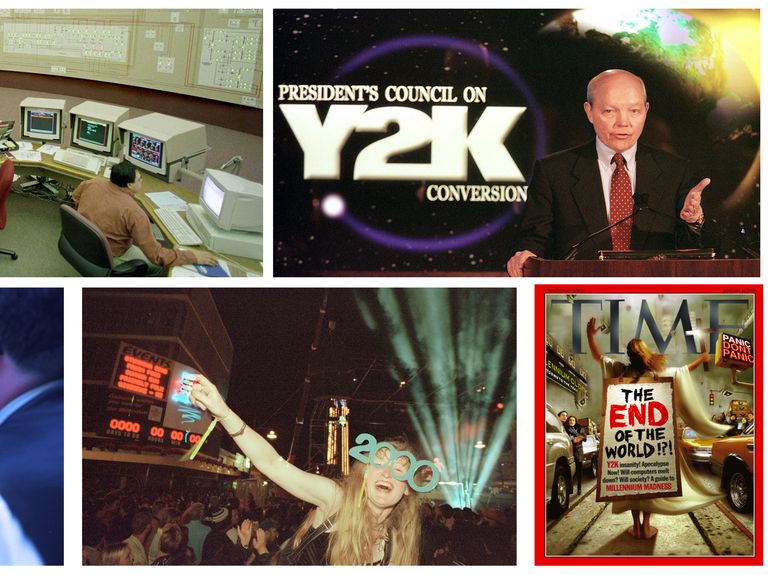
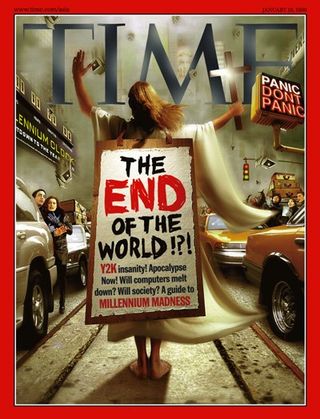
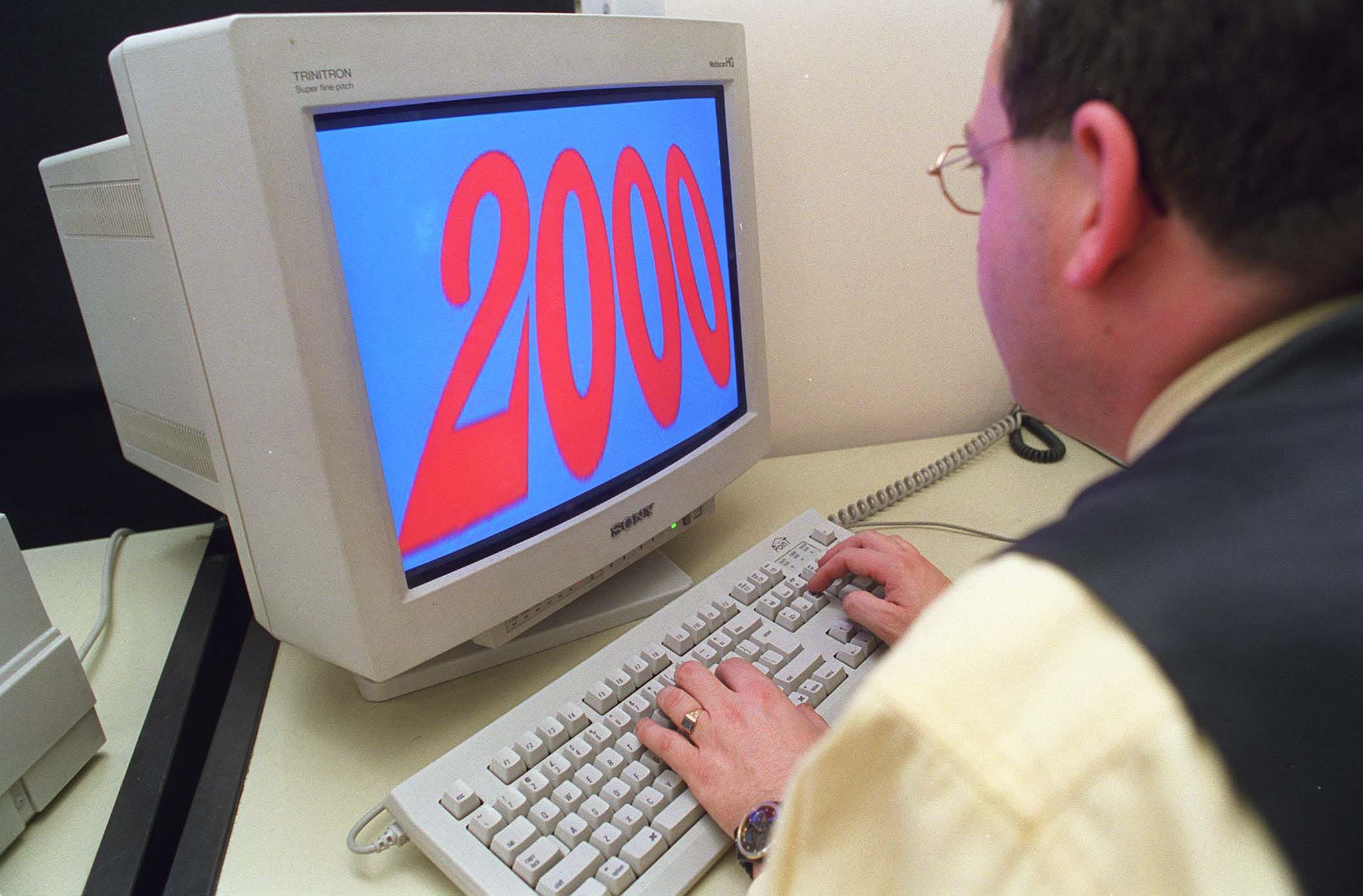
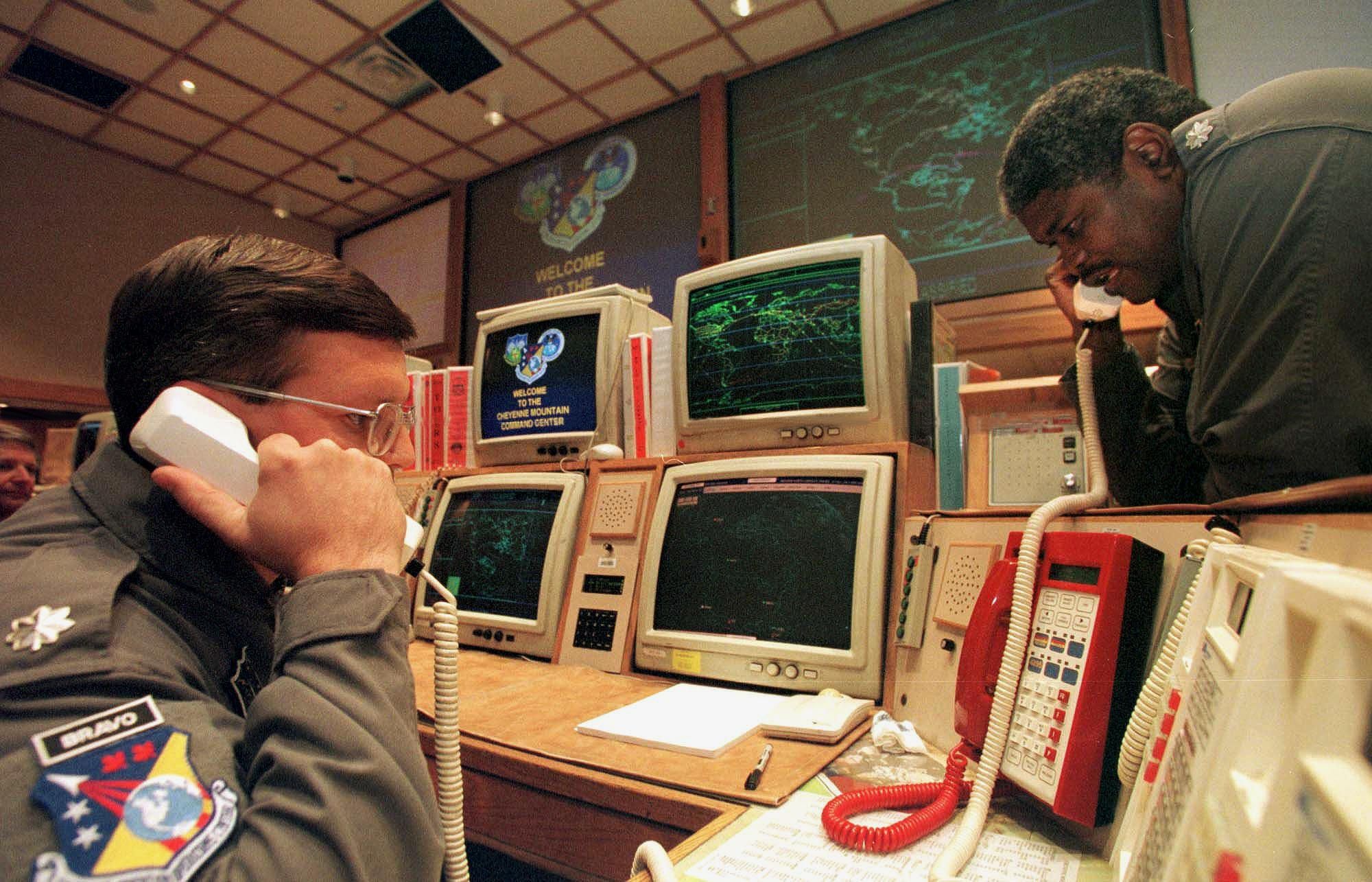

![Jerry Head [& Family] Jerry Head [& Family]](https://hips.hearstapps.com/hmg-prod/images/gettyimages-50625275-1577409373.jpg?resize=2048:*)
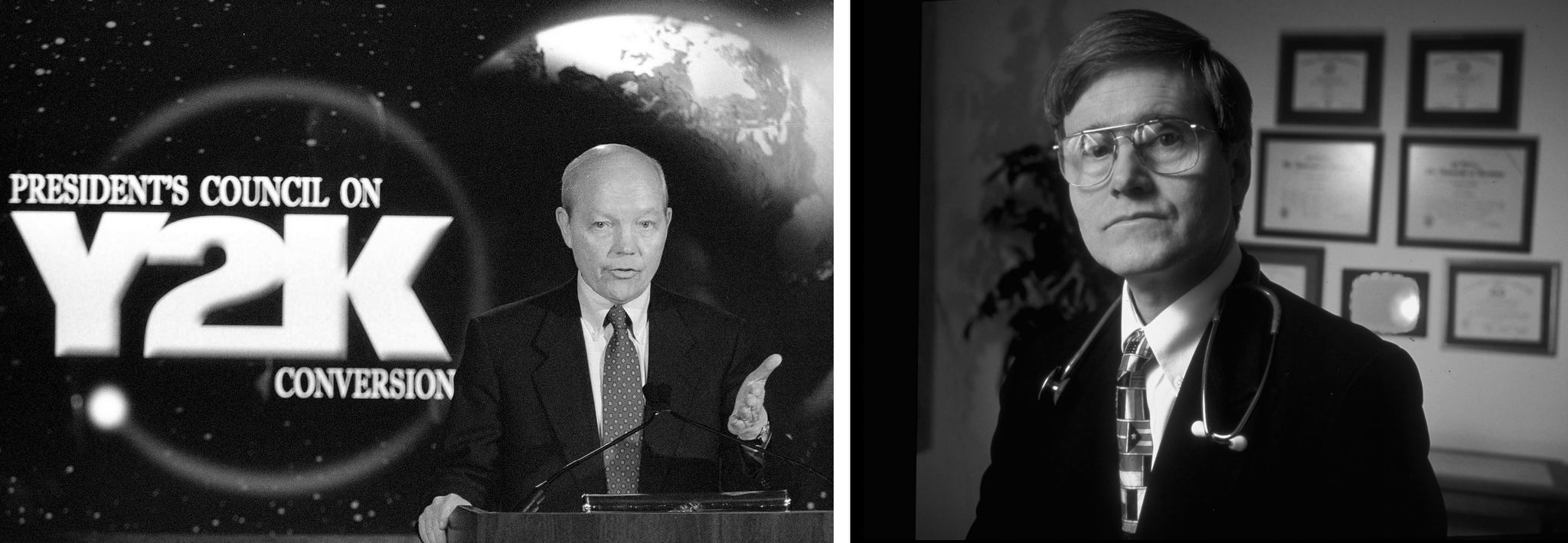
![Bruce Eckhart [& Family] Bruce Eckhart [& Family]](https://hips.hearstapps.com/hmg-prod/images/gettyimages-50661039-1577409711.jpg?resize=480:*)
